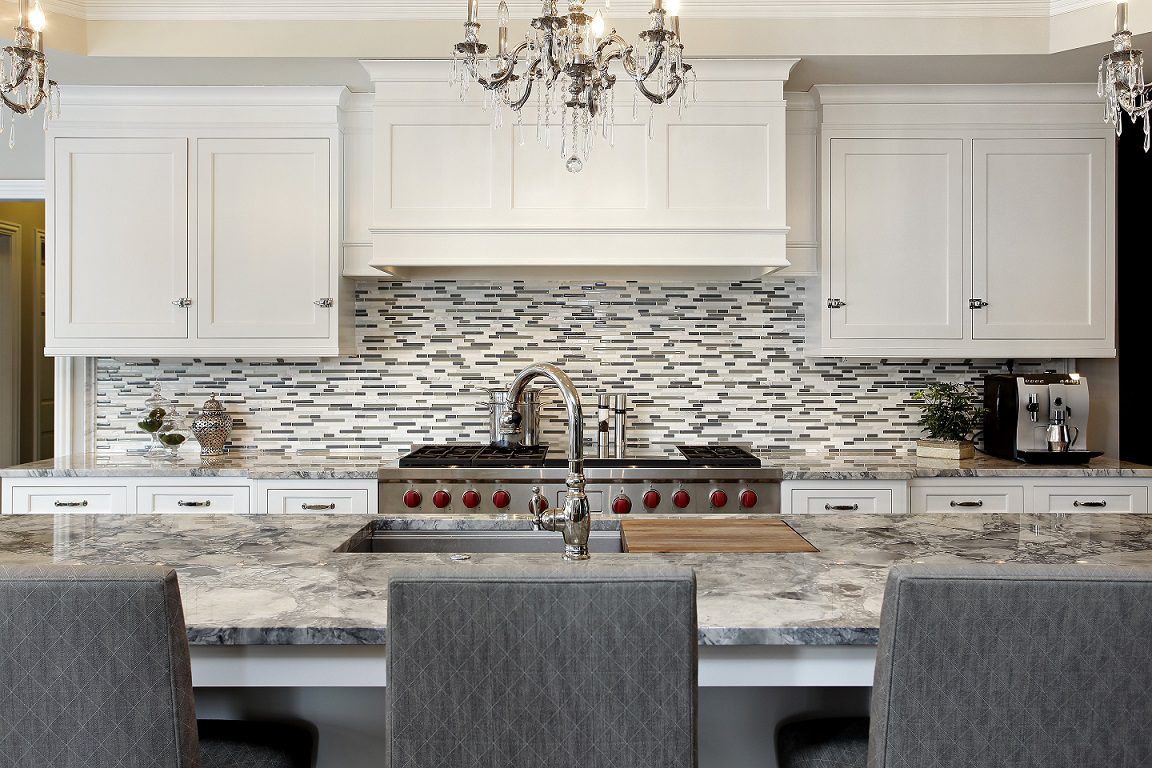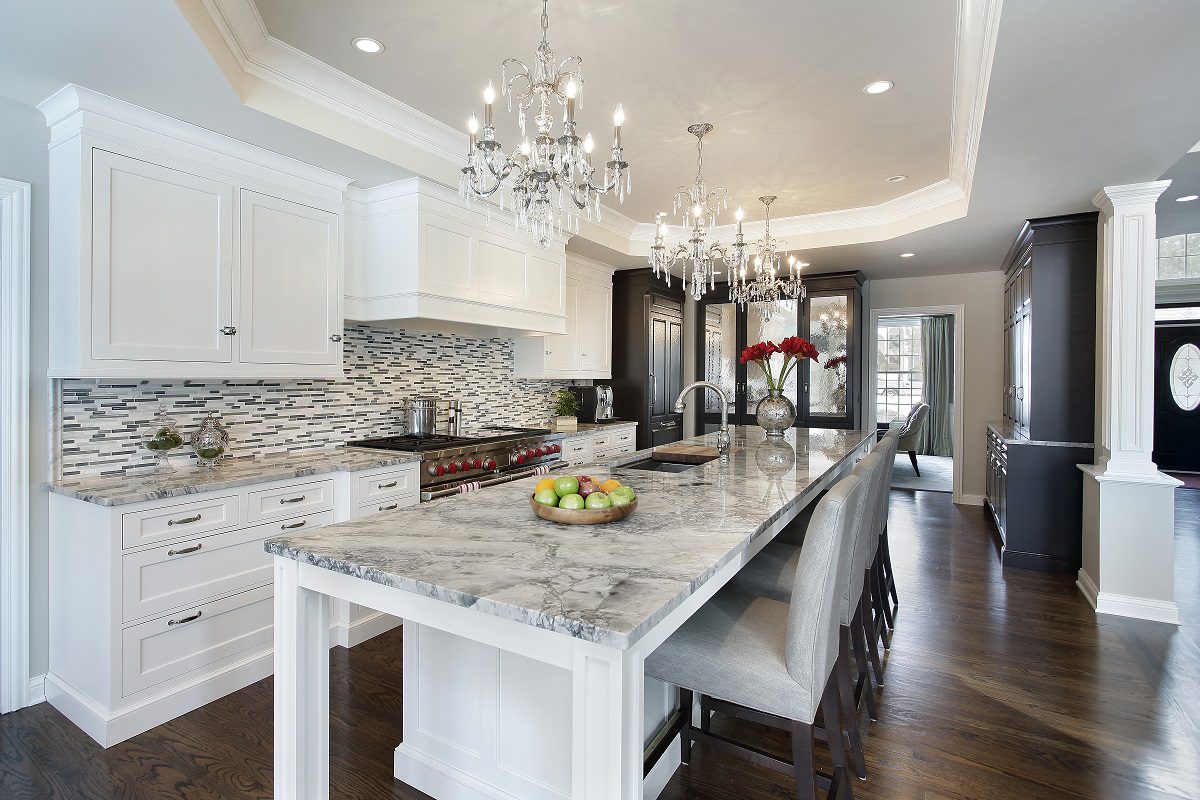Mosaic Tile Backsplash Spotlighted on Dering Hall

This tile mosaic is a focal point that pulls together the color palette in a room.
Thanks to Dering Hall
The IEG team and I are honored that our kitchen project above was chosen by the Dering Hall editorial team for this feature: 25 Spaces With Tile and Stone Mosaics. Tile and stone mosaics are an important, art-inspired way to express your personality and style at home. Mosaics create a one-of-kind look in a room, whether that is quiet or high-energy, playful or sophisticated, colorful or neutral. You can choose to do a partial-wall mosaic or a full wall for greater impact, and we can be tailor them to any design scheme.
Creating Flow from Room to Room
The small-scale, porcelain tiles in this kitchen have a running brick pattern that generates energy and creates a natural flow into the adjacent eating area. They fit beautifully with the clean-lined, transitional look of this elegant kitchen and our clients’ busy and gracious lifestyle. Because we chose more subtle elements throughout the rest of the kitchen, we were able to make a “splash” with this eye-catching mosaic. The mixed shades of gray and soft white tiles also unify the kitchen and eating area. They connect the gray and white quartzite countertops, white cabinets and the stainless steel gray of the Wolf oven and range. Plus, the backsplash works beautifully with the fabric of the Roman shades in the breakfast room.
Pieces of Mosaic History
Simply put, mosaics are a work of art or an image made from assembling small pieces of colored glass, stone, or other materials. When you add a mosaic backsplash or accent wall to your home, you are connecting with an ancient art form that dates back 4,000 years to Mesopotamia. The first mosaics were made of uncut pebbles, all the same size. The ancient Greeks refined this technique while the Romans carried it even further, creating domestic scenes, geometric designs and images of their gods in mosaics. The Greeks also are credited with inventing the tessera technique in which stones are cut into a variety of shapes so they fit together more closely and form tightly constructed mosaics reminiscent of detailed paintings. During the Byzantine Era mosaics advanced from floor decorations to elaborate wall installations with religious themes. Want to know more? We found an excellent history of mosaics here: https://www.britannica.com/art/mosaic-art.

Making mixed patterns work in harmony.
Mixing Patterns
Today we have a wide variety of shapes, colors and patterns to work with in creating mosaics. Mixing patterns in a space gives it a designer finish, but it requires careful planning to ensure that all of the elements work in harmony. Because we chose an energetic backsplash as a focal point, we selected clean-lined cabinets and crown molding, plus quiet patterns and similar colors for the countertop and bar stools, which are upholstered in a tailored, diamond-stitched fabric. Of course, backsplashes have a practical side as well. Kitchens are one of the most high-trafficked and potentially messy areas within a home. These durable mosaics are a good defense against splatters of marinara!
Our Favorites
Our top choices for mosaic backsplashes are porcelain, stone and glass. These materials are durable – when the stone is sealed – easy to clean and add luxurious shine and vibrant color to a space. We also lean towards timeless versus trendy when choosing the right backsplash and tailor it for each client’s home.
 Creating a clean-lined, transitional look with traditional accents.
Creating a clean-lined, transitional look with traditional accents.
Timeless. Approachable. Elegant. Distinctive.
Among the other highlights of this transitional kitchen is the trio of traditional crystal chandeliers, which remind me of diamond earrings paired with a beautifully tailored woman’s suit. We also custom stained the existing red oak floors to bring rich depth to the wood and provide contrast for the white cabinetry and trim. For added interest, we chose two finishes for the cabinets: soft white for the perimeter, recessed-panel cabinets and the island, plus an espresso finish for the butler’s pantry and integrated refrigerator. For architectural heft and depth, we echoed the crown molding from the tray ceiling in the millwork above the cabinets and the pillars dividing the kitchen from the family room. Thanks to kitchen designer Jim Dase at Abruzzo Kitchen & Bath, who collaborated with us on this beautiful project, and thanks again to Dering Hall, an online resource for interior design inspiration. We appreciate your support of our work.


